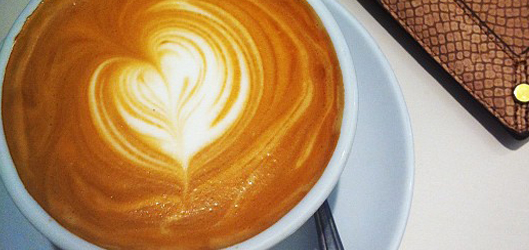
Hillman Curtis used to say that you have to “Eat your audience”. In saying that, I think he was trying to get people to really try hard to intimately know their user. I don’t know if he was trying to figuratively say that we should not just ask people how they eat, but we should actually sit down and eat with them. Or, maybe he was trying to say that we should really try and internalize the audience and make them a part of us. We’ll never know, but regardless, I love that analogy and it’s always stuck in my head.
Recently I saw a headline on Fast Company that said “Square’s ‘Director of experience’ On Why An In-House Barista Makes Everyone Happy”. I clicked through to the article for two reasons. First, I wanted to know what the “Director of Experience” role was at Square. But second, I was curious to know why Square had an in-house barista. The answers are really fascinating and make me realize how serious Jack Dorsey is about the application of storytelling and the writing process to product design.
If you interview at Square, part of the interview is to see the product in action. To accomplish this, Square has an in-house coffee bar. When candidates come to an interview, the recruiter takes them to the coffee bar and then pays a dollar for the drink using Square. Turns out that one of the first four customers of Square was a coffee company. (Side note: the idea of integrating your product experience into the interview is a great way to gauge how interested the candidate is in your company. But, on the other hand, if a candidate hasn’t checked out your product prior to the interview, assuming the product is readily available, then I’d be concerned and probably not hire them.) But, the idea behind a barista at Square extends beyond the interview.
What’s brilliant about having an in-house barista is that this means that Square has someone on staff who is the customer. Kat (the barista) actually receives a new build of the product a few times a week, according to the article. She actually attends product meetings frequently to give feedback and help shape product features. But what’s even better, she doesn’t code and she has no formal training in product or design. Her input is purely from the perspective of a consumer and this gives her the empathy, understanding, and insight into what is truly going to create a great consumer experience.
As I mentioned earlier, Jack has talked about how he considers himself an editor of both technology and teams. In the interview he did with Charlie Rose he said (emphasis mine):
“My strength is programming. I also think my biggest strength is simplification. That’s what I love doing. I love making something complex. I love taking everything away, taking all the debris, the conceptual debris from a technology away so that you can just focus on what’s most important. So I see myself as a really good editor. That’s what I like to be. When I edit a technology, I want to edit a team, I want to edit a story so that we have one cohesive product that we tell the world.
There’s so many ways Twitter could go, there are so many features Twitter could build. There’s so many features that Square can build. But there is only one or two going to bring us to the next level. So edit that to one, to get rid of all those inputs and edit to one cohesive story, one single thing we’re saying to the world and that’s what we do with product.”
I’m sure that having Kat at Square helps keep everyone focused on editing to that “one” thing as Jack said. So, if you are working on a product today, you should ask yourself two things:
1) Who is your Kat?
2) What can you to do eat your audience?
I’d love to hear ideas on how you keep your team focused on the story of how the people are using your products, and not just in the weeds of specific interactions and functionalities. How do you keep your team focused on that one thing?